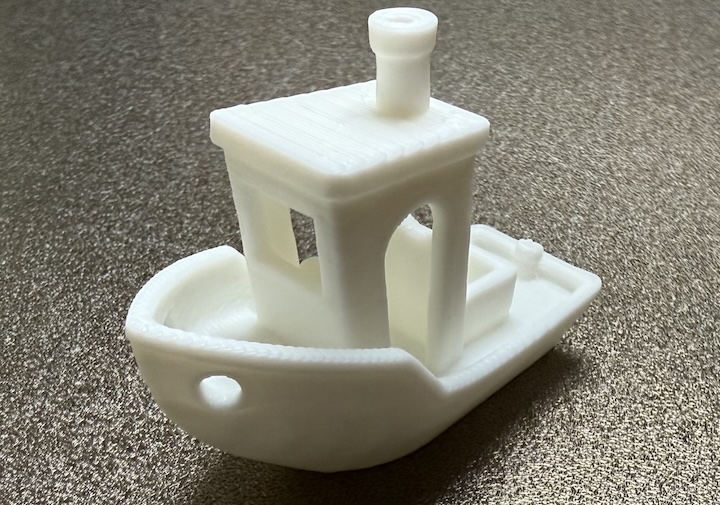Adventures in the Third Dimension

3D printing has, for a few years now, been something that I’ve watched with interest from a distance, but never quite felt compelled to plunge into. This began to change when the girls found some cute articulated dragons in a souvenir shop. When they learned that these had been made by a machine that you could actually have in your house, they were immediately hooked on the concept. This turned out to be the push I needed to start looking more seriously.
The world of hobbyist 3D printing has come a long way in the 15 years since the patent on FDM lapsed. The printers of today are leaps and bounds ahead of those from even a few years ago, in terms of quality, reliability, and, in particular, ease of use. While it’s still possible to get a printer that is also a project, I decided that (for the moment, at least), we were more interested in the capabilities than the device itself. Hence, I wanted something simple, dependable and beginner friendly. Bambu Lab kept cropping up in both personal recommendations and reviews as a stand-out in these areas, and they happened to have an early Black Friday sale on. I bit the bullet and ordered their entry-to-mid-range A1 Combo.
Delivery took a week or so, which gave me time to clear out a bit of space in the spare room, and reinforce the desk to make sure the printer had a solid home. Unpacking and setting it up was a breeze, and (with a quick check on my thinking on Reddit) I was soon holding my first Benchy, pictured above.
The A1 itself lived up to the hype in terms of ease of use. In fact, it was so straightforward that it felt like cheating, with none of the manual calibration, tweaking of settings and crossed fingers traditionally associated with 3D printing. Modern printers in general, and Bambu Lab’s in particular, have really reached the point where you can just use them. There’s still plenty of tweaking and learning that’s possible, but you get pretty good results out of the box with a minimum of fuss. The question remains, though: why?
When you get, say, an upgraded iPhone, it does basically the same things as your old one, just better and more. In contrast, getting a 3D printer opens up something entirely novel, a new capability that you didn’t have before. This is exciting, and increasingly rare in the realm of technology. The ability to design something unique on screen, and then press a button and have it in your hands1 feels truly magical.
3D printing is not yet quite mainstream, either in terms of cost or ease, but it’s not far off. In some ways, it’s reminiscent of the microcomputer revolution of the late 70s and early 80s, where home computers went from something that you had to build to something that you could buy ready to use. This kicked off a flowering of creativity and exploration, making it (then and now) an interesting time to be getting into the area.
More important than the big picture, though, is the happy surprise of the degree to which it’s fired my imagination (and the girl’s). My mind is fizzing with what to make next.
-
Some sequences shortened. [back]